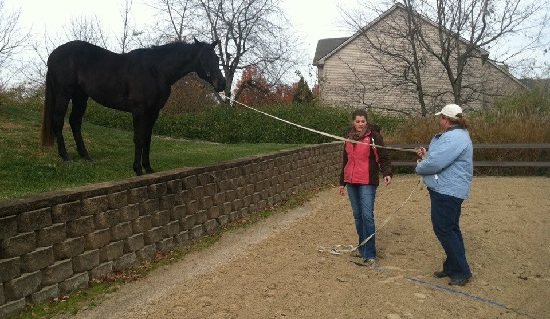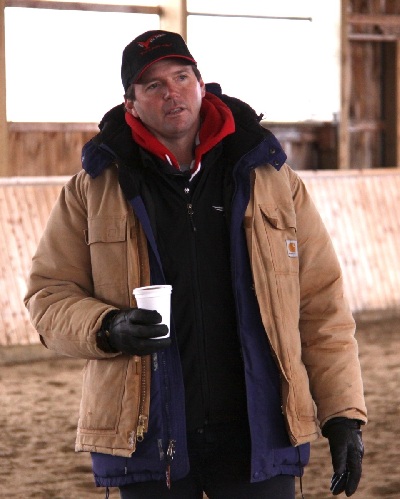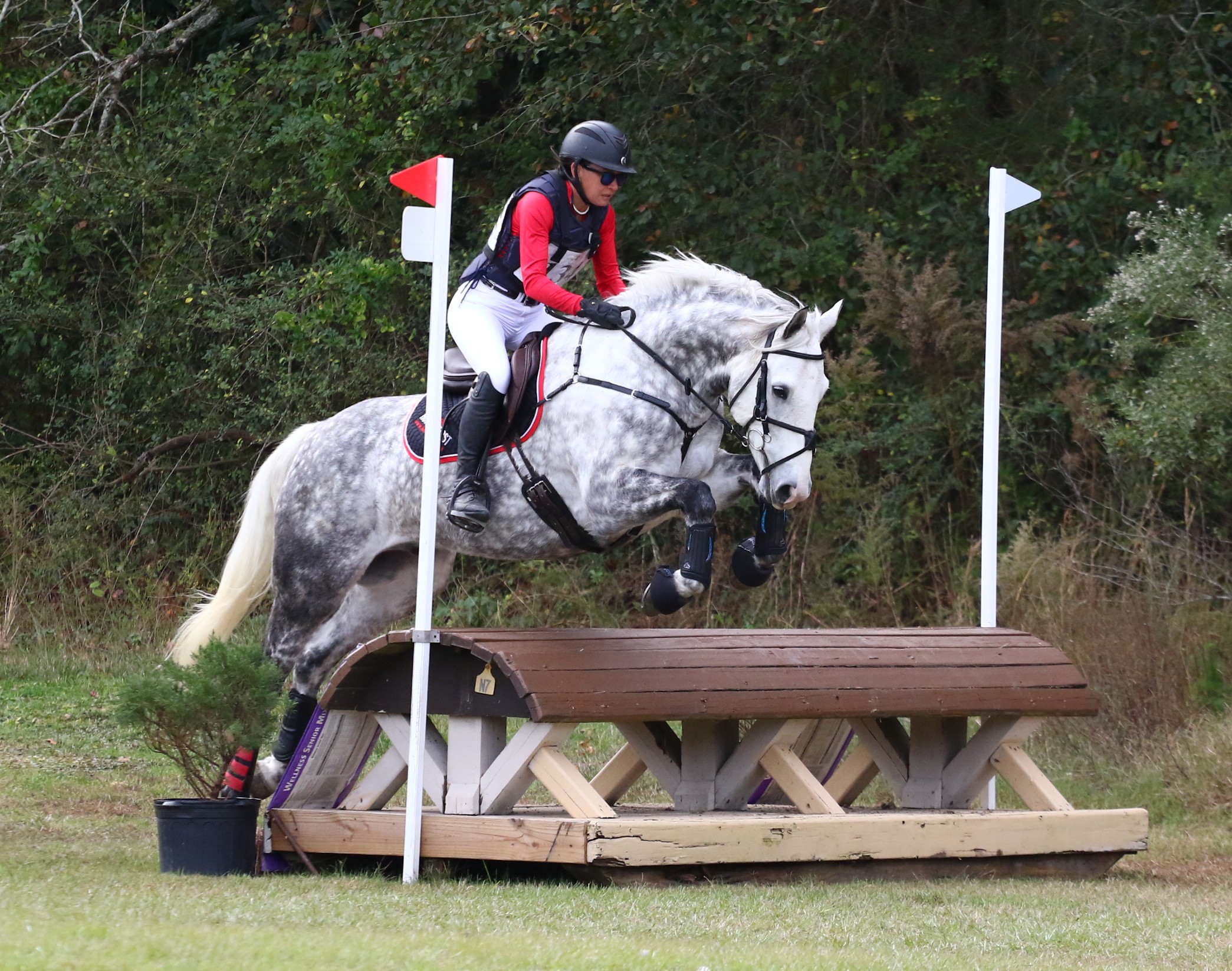“Why Does My OTTB (insert weird quirk here)?” Volume IX

This week, with Thanksgiving on the horizon and everyone scrambling to shop, cook, and mentally prepare for family run amok followed by Black Friday domination, no questions necessitating inclusion in this column found their way to my inbox. Thus, I will go it alone here and answer a few questions about the ins and outs of getting involved in the Thoroughbred industry. Sit back, relax, and don’t quit your day job!
–
My name is Little Suzi, and I ride Novice on my packer and work at Claire’s Boutique. I hear galloping racehorses pays much better money. I think I’m totally qualified, I mean Novice is FAST and I’ve done six whole events. How do I get started?
Every single week I get calls, texts, and emails just like this. Really, galloping racehorses as a profession comes down to this: You have to love it. Adore it. Cherish it. Eat, sleep, and dream it. And it has to be a means to an end. You must ultimately crave a professional, life-long career as a jockey or trainer or a steward. No one gallops forever, it’s far too hard on your body and mind.. It is NOT a part time job or a way to supplement income. It takes, in my humble opinion, a minimum of 5 years to even be what I would consider proficient at galloping. 5 years of working 7 days a week 50 weeks a year, riding at least 10 horses a day. That amounts to nearly 20,000 rides and that is the minimum. Inept and, more seriously, riders that are afraid are a danger to themselves and others. You are not only putting your life and your mounts life at risk if you don’t know what you are doing but you are also endangering every other horse and rider on the track. You know those schooling days at your local horse park where some yeehaw in a one-eared bridle with a giant curb bit and an English saddle made in the 1940’s comes out to school and mows down children on ponies and adults on OTTB’s and eventually kersplats in the water jump? You don’t want to be that person on the racetrack. Plenty of extra money can be made hotwalking, grooming, ponying, and doing other odd jobs on the racetrack. Stick to that.
–
My name is Mean Jean and I’ve competed through Advanced on horses who moonlighted as fire-breathing dragons and Ferrari’s. I’m 5’5, 125 lbs, and all of that is muscle. I’m willing to open my ears and shut my mouth, work hard, endure all weather conditions at all hours of the day and night, and it is my life’s goal to train racehorses professionally. Where should I start?
On a farm. If you are absolutely hell-bent on riding racehorses for money (and I certainly don’t recommend doing it for free!), do not go to your local sanctioned racetrack and start walking around telling people you know how to ride. Find a farm that starts babies and go from there. Across the board, the ideals behind starting young horses under saddle are more or less universal. You will get the feel of riding in exercise tack, learn how to tie a knot in your reins, learn how to get legged up without breaking the back of the person legging you up or falling off the other side of the horse, and most importantly you will begin to gain insight to how the entire industry operates. Most of the time, farm jobs will lead to track jobs and you won’t even have to take the risk (and trust me, it is as risky as sticking your hand in a sharps box at a homeless shelter) of walking around the backside trolling for mounts. This is a reliably dangerous practice. In most cases, the mounts you find are the horses no one else wants to ride. That is why they are looking for a rider in the first place. While there are exceptions to every rule, these horses are often crazy, sour, sore, or all three. You don’t want to be the crash test dummy when Fruit Loops McGee bolts through the outside rail or Hop Along Cassidy snaps one off galloping down the lane. But walking around the backside of racetracks with a vest and helmet on may very well land you in that position. Tread with caution and ask around. The butchers and the hack job trainers have reputations as such and riders and grooms alike will be happy to share their knowledge with you.
–
My name is Sensible Steve and you are right! I have no business riding racehorses. I would love to make money in the racing industry though and I have heard there are a lot of ways to do that. I want to start right away, where should I go?
Firstly, please note that all backside employees including trainers, riders, grooms, hotwalkers, vets, farriers, outriders, and everyone in between must be license by the state to be employed on the backside and, most importantly, to be covered by workman’s compensation as well as by the tracks insurance policies. However, it is also important to note that you must be employed before you can be licensed. Again, I suggest starting at a farm. But let’s assume you have already completed that step and that farm is shipping to Florida for the winter and you can’t go. What’s an unemployed horse person to do? Go to your local track and stand by the rail or the clockers’ stand in the morning. Talking is important before the walking begins. Often, the outriders will know who needs help and who not to work for. Around 10 am, when activity at the barns is winding down and most or all of the horses have been out to gallop, walk around to barns that are clean, well-kept, organized, and have horses with their heads over the webbings contentedly munching hay. Right about now you will wish you had paid attention during Spanish class in high school. Any job on almost any racetrack in America necessitates, at the very least, an elementary school grasp on the Spanish language. Esto ayudara mucho, empezar a estudiar! They even make App’s for this sort of thing so it is not difficult to become proficient on a basic level. To ‘break in’ to most barns, you will likely have to start out as a hotwalker unless a grooming position is already available and you have been grooming on a farm. If you stick with it long enough, the well-paying foreman and assistant trainer positions will come available but with more money comes longer hours and more responsibility. Start small, dream big, keep your mouth shut and your ears opened, and you will go far!
–
I do hope that some of my answers to the questions above been enlightening and have revealed to you the world and its people that produce OTTB’s. I encourage you (PLEASE! Even if you think they are stupid questions!) to send any further, horse-specific or general-knowledge questions to me via email ( [email protected]) for more in-depth and on-point answers, especially if you are considering pursuing a career on the racetrack. The EN and COTH response has been great and I look forward to make more thought-provoking questions! Go Eventing and go gallop a former racehorse (not to be confused with a current racehorse!).




















































